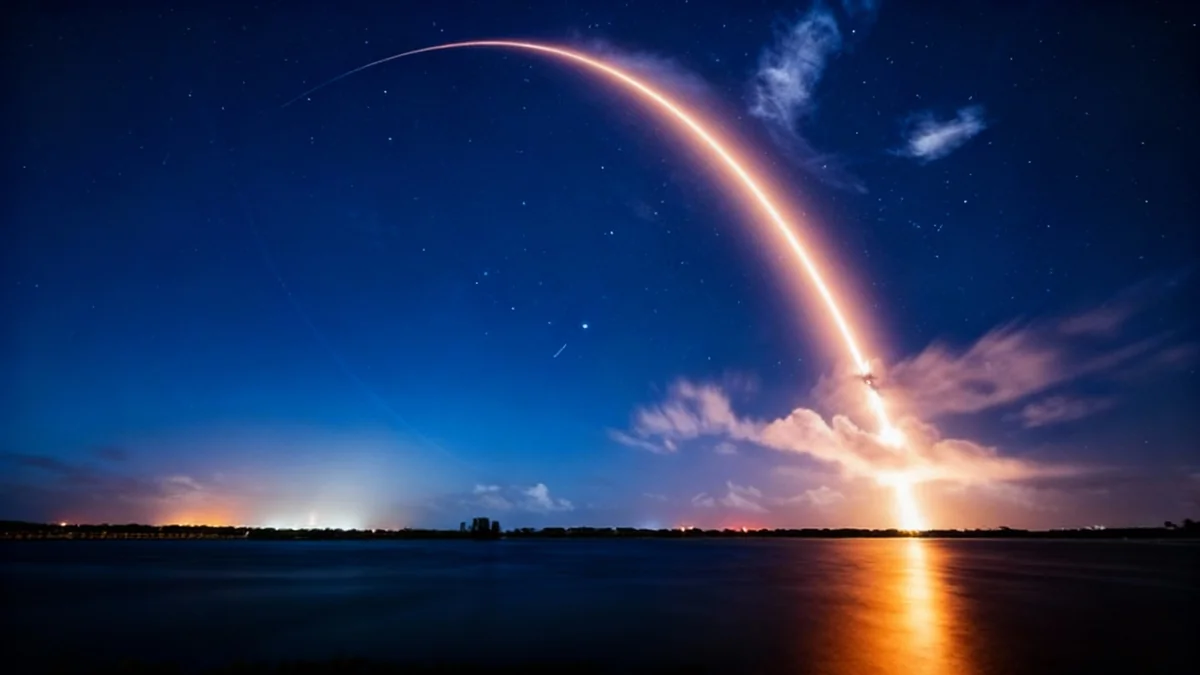SpaceX has officially launched over 10,000 satellites for its Starlink internet constellation, a significant milestone that underscores the company's rapid expansion in low-Earth orbit. The achievement was marked by a Falcon 9 rocket launch from Vandenberg Space Force Base on October 19, which pushed the total number of launched satellites to 10,006.
This massive deployment has reshaped global connectivity but also intensifies the debate over the sustainability and safety of an increasingly crowded orbital environment.
Key Takeaways
- SpaceX has now launched a total of 10,006 Starlink satellites since the project began.
- The active Starlink constellation consists of approximately 8,704 operational satellites in orbit.
- Starlink satellites now account for roughly two-thirds of all active satellites orbiting Earth.
- The growing number of satellites raises significant concerns about orbital debris and the risk of in-space collisions.
A Landmark Achievement in Spaceflight
The recent launch solidifies SpaceX's dominant position in the satellite industry. The company's ability to frequently launch and deploy large batches of satellites using its reusable Falcon 9 rockets has enabled a pace of expansion previously unseen in the history of spaceflight.
With over 10,000 satellites sent to orbit, the Starlink project has single-handedly altered the landscape of low-Earth orbit. For perspective, the European Space Agency estimates there are only about 12,500 active satellites in total, meaning SpaceX's constellation represents a vast majority of orbital hardware.
What is Low-Earth Orbit?
Low-Earth orbit (LEO) is the region of space around Earth at an altitude between 160 and 2,000 kilometers. Its proximity to the planet makes it ideal for satellite imaging, communications, and the International Space Station. However, it is also the most congested region of space, filled with active satellites, defunct spacecraft, and debris.
The Reality of a Functioning Constellation
While the 10,000-launch figure is impressive, it does not represent the number of satellites currently operational. Starlink satellites have a limited lifespan, typically lasting a few years before they are intentionally de-orbited.
This process involves the satellite lowering its altitude until it burns up upon re-entering Earth's atmosphere. This design is intended to mitigate the long-term problem of space junk. However, there remains a small but non-zero risk that fragments could survive re-entry and reach the ground.
Tracking the Constellation
According to astrophysicist Jonathan McDowell, who closely tracks orbital objects, the number of active Starlink satellites is closer to 8,704. Of these, 8,688 are reported to be functioning correctly. The discrepancy between launched and active satellites is due to the regular retirement and de-orbiting of older models.
The continuous cycle of launch and retirement is a core part of SpaceX's strategy to maintain and upgrade its network with newer, more capable technology.
Transforming Global Internet Access
The primary mission of Starlink is to provide high-speed, low-latency internet to underserved and remote areas across the globe. The sheer size of the constellation has enabled unprecedented connectivity in places where traditional internet infrastructure is unavailable or unreliable.
The service has found critical applications in various sectors:
- Maritime: Providing reliable internet to ships at sea, including Coast Guard vessels.
- Aviation: Offering in-flight Wi-Fi for commercial airlines.
- Emergency Response: Deploying internet services to disaster-stricken areas.
- Military and Government: Supporting communications in conflict zones, such as in Ukraine.
This capability has demonstrated the profound impact of a proliferated satellite network, changing how individuals, businesses, and governments operate in a connected world.
Growing Pains in a Crowded Orbit
The rapid growth of the Starlink constellation is not without its challenges. The dramatic increase in the number of objects in LEO has raised serious concerns among space agencies and astronomers about the risk of collisions.
"Any collision is a risk to all other satellites in orbit because of the resulting debris field, and also to us here on the ground that might get struck by a stray piece."
The U.S. Space Force is currently tracking nearly 47,000 objects in space, a number that includes everything from active satellites to tiny fragments of debris traveling at extreme velocities. A collision between two objects can create thousands of new pieces of debris, each capable of causing catastrophic damage to other satellites.
The Need for Traffic Management
To mitigate this risk, SpaceX's satellites are equipped with autonomous collision avoidance systems. The company reports that its satellites perform tens of thousands of avoidance maneuvers each year to dodge other spacecraft and orbital debris. However, as SpaceX plans to launch tens of thousands more satellites and competitors like Amazon's Project Kuiper begin building their own constellations, the complexity of space traffic management will grow exponentially.
This new reality is pushing international bodies and national governments to develop more robust regulations and traffic coordination systems to ensure the long-term sustainability of activities in space. The 10,000th Starlink launch is not just a milestone for SpaceX; it is a call to action for the entire global space community.





